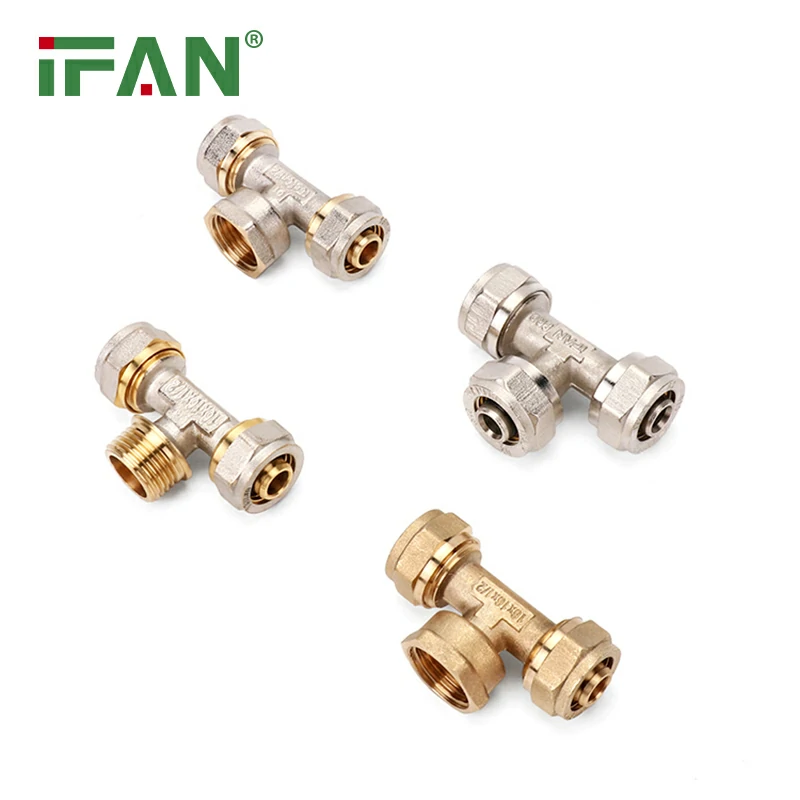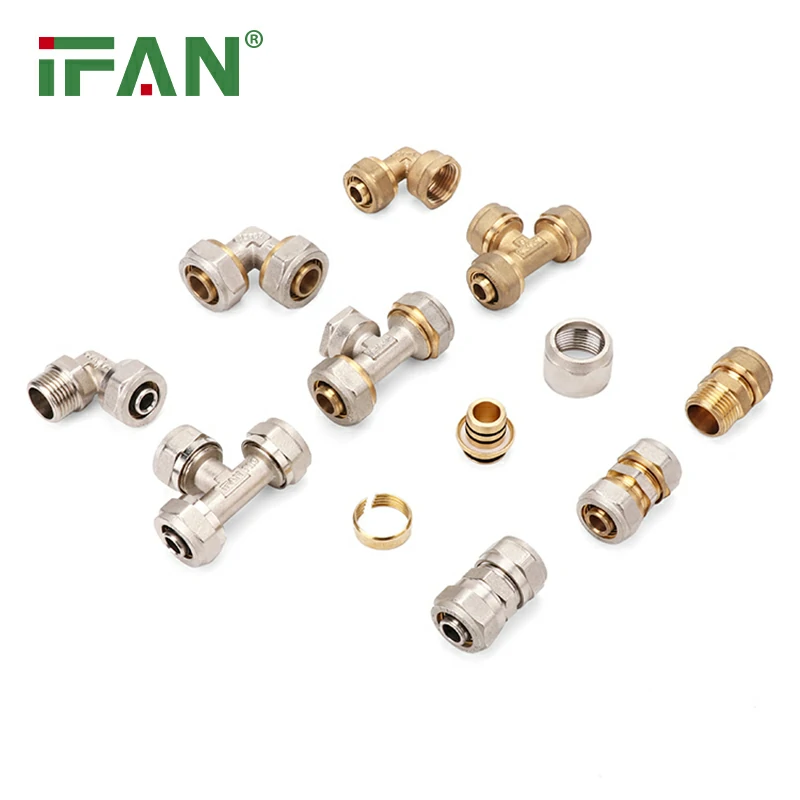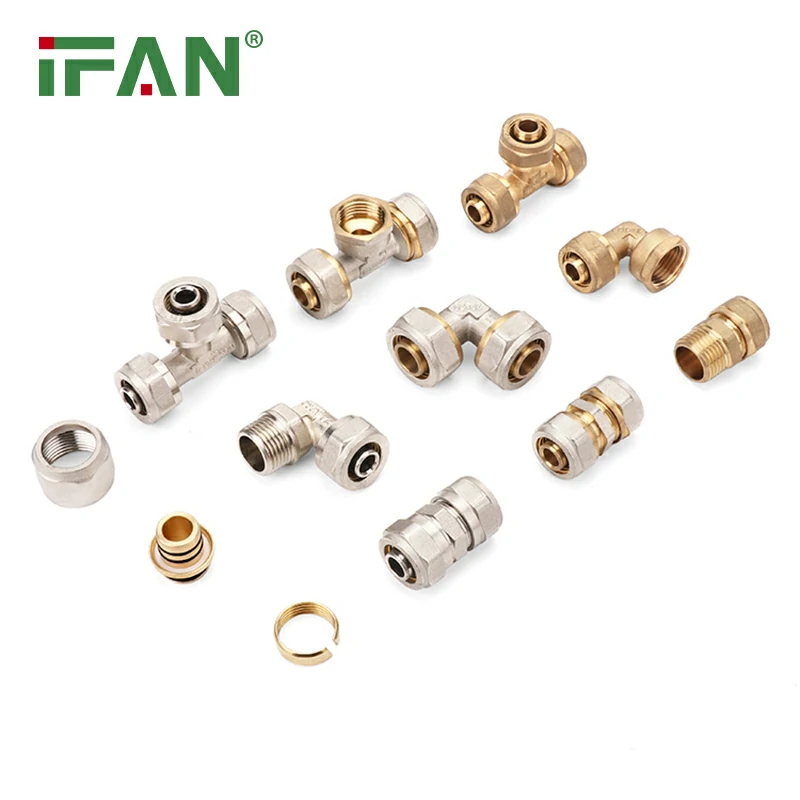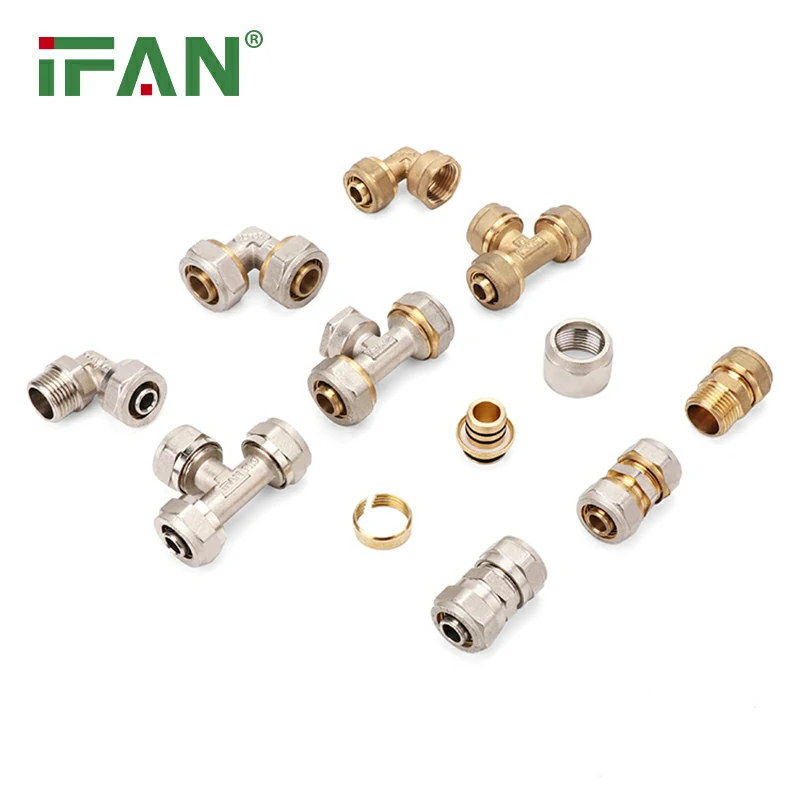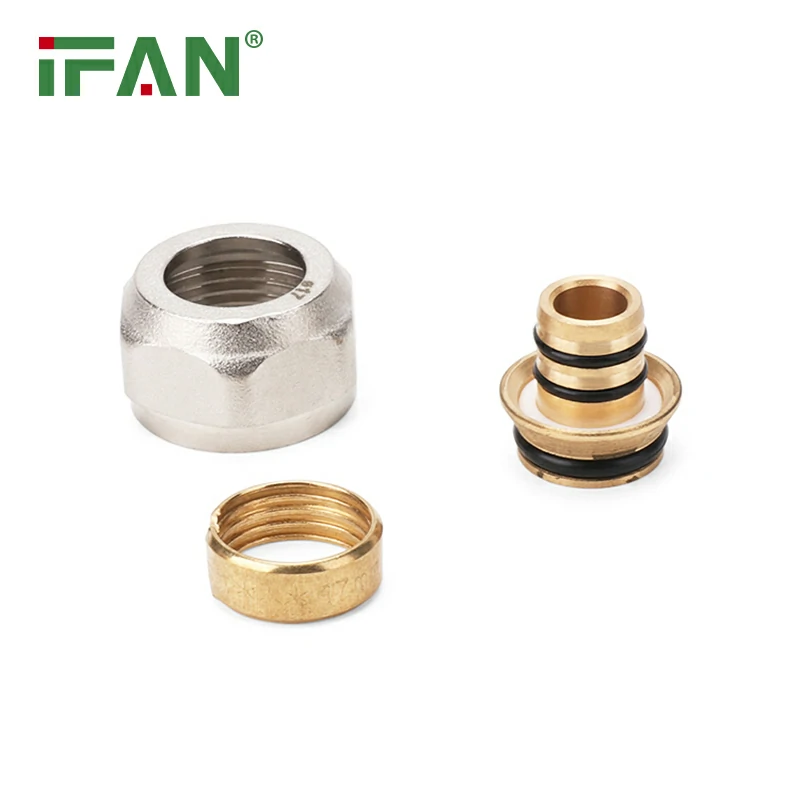Brass fittings are available in various types, each designed for specific applications and connection methods. Understanding the different types of brass fittings is essential for selecting the right fitting for your plumbing or gas system requirements. In this article, we will explore the most common types of brass fittings and their uses.
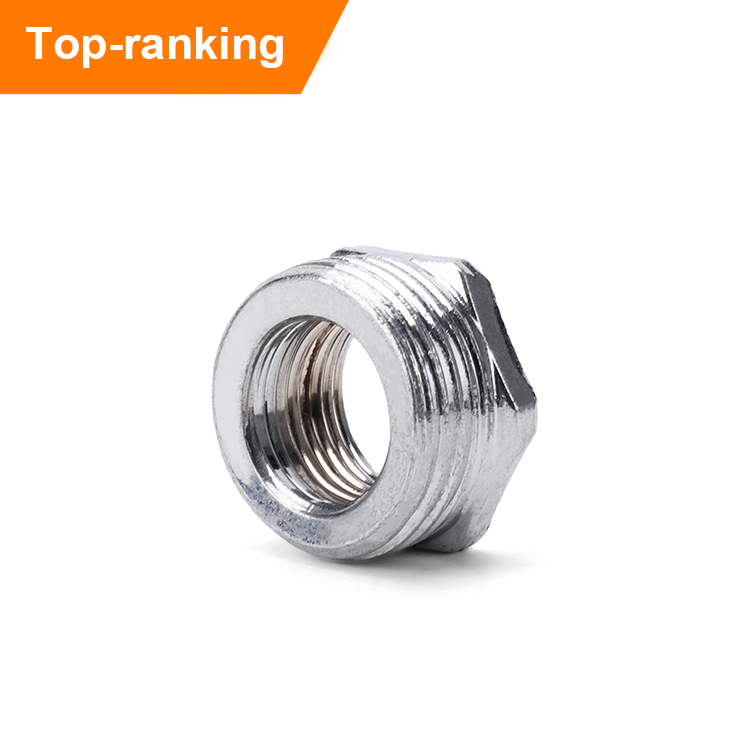
Compression Fittings: Compression fittings are widely used in plumbing systems to connect pipes or tubing. They consist of three main components: a compression nut, brass compression ring (also known as a ferrule), and a fitting body. Compression fittings provide a tight and leak-free connection by compressing the ferrule onto the pipe or tubing. They are suitable for both rigid and flexible pipes and are often used in applications where disconnection and reconnection may be required.
Threaded Fittings: Threaded brass fittings have male or female threads that allow them to be screwed onto pipes or other fittings. They are commonly used in plumbing systems where a secure connection is needed. Threaded fittings come in various shapes and sizes, including elbows, tees, couplings, adapters, plugs, and caps. They are used to create directional changes, connect different pipe sections, or close off unused ports. Threaded fittings require the use of thread sealants, such as Teflon tape or pipe dope, to ensure a proper seal.
Flare Fittings: Flare fittings have a cone-shaped end that forms a seal when connected to a corresponding fitting. They are commonly used in gas and refrigeration systems. Flare fittings require flaring the end of the pipe or tubing using a specialized tool. The flared end is then connected to the fitting using a flare nut. Flare fittings provide a reliable and leak-free connection, making them suitable for high-pressure applications.
Barbed Fittings: Barbed fittings have ridges or barbs on the surface that grip onto the inside of hoses or tubing, creating a secure connection. They are commonly used in low-pressure applications, such as garden hoses, pneumatic systems, and fluid transfer lines. Barbed fittings are available in various configurations, such as straight connectors, elbows, tees, and Y-connectors.
Push-to-Connect Fittings:
Push-to-connect fittings, also known as quick-connect or push-fit fittings, provide an easy and convenient way to connect pipes or tubing. They feature a release collar that allows for simple and tool-free installation and disconnection. Push-to-connect fittings have an O-ring and gripping mechanism inside that create a secure and leak-free connection when the pipe is pushed into the fitting. These fittings are commonly used in plumbing, HVAC, and pneumatic systems, offering fast and efficient installation.
Sweat Fittings: Sweat fittings, also known as soldered fittings, are used in plumbing systems where copper pipes are joined using soldering techniques. They have a plain end that is inserted into the pipe and sealed by melting solder around the joint. Sweat fittings require specialized soldering equipment and skills to ensure a proper and secure connection.
Compression-Flare Fittings:
Compression-flare fittings combine the features of compression and flare fittings. They have a flare end that can be connected to a corresponding flare fitting, as well as a compression end that allows for connection to pipes or tubing using compression techniques. These fittings provide versatility in applications where both flare and compression connections are required.
Push-on Hose Barbs: Push-on hose barbs are fittings designed to connect hoses with a push-on style. They feature barbed ends that securely grip onto the inside of the hose, creating a tight connection. Push-on hose barbs are commonly used in low-pressure applications, such as fluid transfer lines, irrigation systems, and air lines.
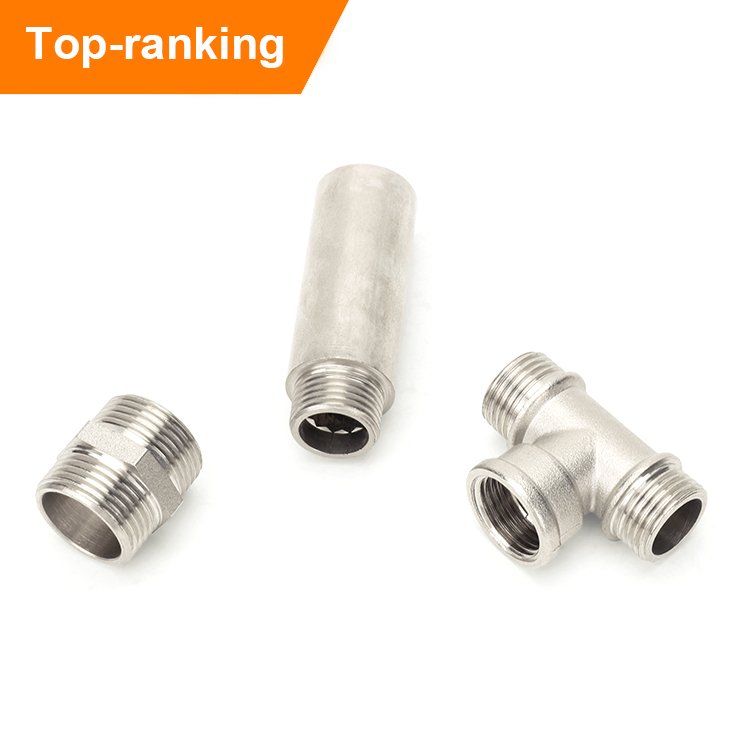
It is important to choose the appropriate type of brass fitting based on the specific application, system requirements, and connection method. It is recommended to consult the manufacturer’s guidelines and specifications to ensure the proper selection and installation of brass fittings.

